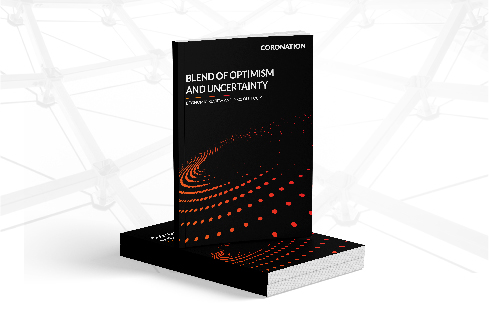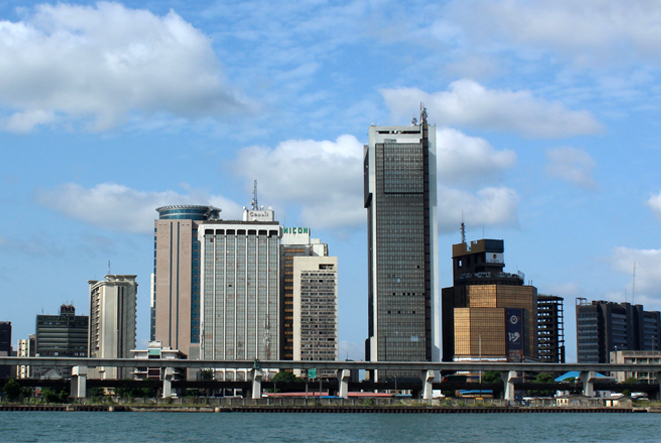The global equity capital market has been reacting to the infusion of significant cash investments – $83billion in 2020 and over $53billion in the first two months of 2021, according to data compiled by Accelerate Financial Technologies Inc. If the current pace continues, over $300billion could be raised in 2021. These investments have primarily been channelled into non-operating vehicles created to identify and seize opportunities either in private or public entities. The main objectives of the promoters of these vehicles are to inject the funds raised into identified entities through the acquisition of strategic stakes in them to drive business optimisation and achieve alpha returns. The vehicles through which they have chosen to achieve these objectives are called SPACs – Special Purpose Acquisition Companies. These SPACs have become quite commonplace in recent times and it is important to understand their workings and applicability, in the Nigerian capital market.
Our intention is to begin to draw attention to possible uses to which SPACs could be put within our markets but first, let’s start with understanding the framework, benefits, limitations and critical success factors of these investment vehicles.
What really are ‘SPACs’? Special Purpose Acquisition Companies are exchange-listed shell companies that raise capital through initial public offerings (IPOs) and either merge with or acquire an existing unlisted firm that would rather avoid the rigours of a traditional IPO. Typically, SPACs do not have any underlying businesses and they most often do not have an identified target at the point of fundraising, a fact that would typically be disclosed in the SPAC’s prospectus.
Who would turn down a blank cheque?
SPACs are aptly described as “blank-check” companies because they often have loose and speculative investment mandates to acquire or merge with targets typically within a few months and certainly within a two-year timeframe, failing which the capital raised is returned to the public shareholders. According to data from Bloomberg, the earliest listing on record of a blank-check company dated back to 1993. SPACs used to be regarded as an absolute last resort — if a company could not go public via a regular IPO or attract takeover interest from investors, SPACs provided a viable alternative.
The previous record was set in 2007 during the financial crisis when a far-cry total of $6 billion was raised globally. Following the financial crisis, investing in an IPO with no commercial operations was considered unreasonable and interest in SPACs diminished significantly, before the boom that began in late 2019. In a sense, it could be argued that the re-emergence of SPACs may have been informed by the fact that, for the sponsors creating SPACs, the mechanism offers a quicker turnaround for their investments relative to traditional private equity funds, which often seek to harvest on a seven to ten-year time frame. As more high profile, knowledgeable investors sought yield in the sector, the sight of financial heavyweight sponsors raising SPAC funds afforded the model a better profile and attracted more interest to the sector. Many bulge bracket investment banks have, as a consequence, sought to establish their SPAC competencies and businesses.
So how does this special purpose investment vehicle really work?
A SPAC essentially flips the IPO process around – with investors first of all pooling their funds together and no idea what company the funds would be invested in. The required disclosures are therefore easier than for a regular IPO since the issuing entity neither has prior liabilities nor operations. SPAC deals typically take the form of “reverse mergers”, in which a SPAC takes the name of the business it buys. The acquired company gets the stock ticker and funds quicker than through a regular IPO. The SPAC investors thereby become shareholders in the combined entity and the SPAC sponsor gets a significant stake through the founder’s shares and warrants which in many cases, could exceed 20% of the total shares outstanding of the resulting company.
In the typical SPAC, shares and warrants are sold in a bundled unit. If investors of the SPAC are uncomfortable with a planned purchase upon its announcement, they have the option of selling their shares but keeping the warrants. This in essence gives them the optionality of an upside even for transactions they have opted out of, in the event that a merger or acquisition turns out better than they had expected. This combination of shares and warrants is one of the central attractions to SPACs, especially in a volatile market environment. As soon as the business combination is completed, the acquired target becomes the substantive public entity. While SPACs may operate by way of acquiring a private company and taking it public by merging it into the listed SPAC, Private Investments in Public Equities (PIPEs) have also become rather common – the level of dynamism and creativity that can be applied to these structures can be varied.
Now let’s talk about the warrants. Early investors in SPACs get to buy units, which are usually comprised of one share of common stock and a fraction of a warrant to purchase more stock at a later date. Warrants are considered a valuable kicker, which provides investors with the possibility of additional compensation for their cash, but would otherwise expire worthless if a SPAC fails to close an acquisition within the pre-agreed timeframe. If an acquisition is completed, warrant holders can buy more shares by turning in their warrants, a compelling proposition for investors betting on a rise in share prices of the company resulting from a SPAC merger, after going public. However, when those warrants are exercisable, they can have a significantly negative impact on the common shares, as early investors sell down.
Among other advantages which are detailed in the following text, being a listed entity gives the management team a platform to potentially raise sizeable capital to enable them to make meaningful acquisitions while avoiding challenges typically experienced by traditional private equity investors with defined exit constraints. As previously mentioned, sponsors also get to retain a significant stake in the combined entity at relatively minimal costs.
From the perspective of an investor, they get the opportunity to co-invest alongside the management team, as all associated expenses to future deal-making are pre-determined and all acquisitions are approved by the SPAC’s shareholders. Investors also find SPACs compelling due to the limited downside and yield. The capital raised in a SPAC IPO stays in a trust and is often invested in short-term sovereign securities until a merger with, or acquisition of a targeted company, so an investor can redeem common shares for their principal investment plus accrued interest. In the event that a SPAC is unable to identify and close an acquisition over a specific period, investors have their funds returned. SPACs are sometimes treated like closed-end funds, with shares being bought when they trade beneath the amount held in trust and sold at a premium, usually when news or an announcement of a deal causes a bull run.
For companies seeking a pathway to simplified public listings, a reverse-merger with a SPAC has increasingly become a compelling alternative relative to the traditional IPO route. For instance, companies that are yet to make a profit could market their future financial potential via a SPAC listing. This would have been unacceptable in an IPO. Another advantage of going public with a SPAC is a shorter timeline to listing relative to traditional IPOs. A SPAC merger may also be considered appealing as it is privately negotiated with a set pricing consideration. Once a deal is formally agreed, the path to public markets is established, implying that market turbulence is less likely to disrupt the programme.
Now let’s talk about the big question: how reasonable are SPACs as investments for retail investors? A SPAC is generally thought to be structured with crucial safeguards for wide range of investors. For instance, if a proposed combination is not approved by an investor, that investor could get his or her capital back, inclusive of interest. That seems pretty safe! However, we should consider that although SPACS tend to be structured to provide some element of safety, the same streamlined, speedy process that appeals to founders could indeed increase the risks for investors. The most obvious is that the flip side of making things easier for companies is inevitably that the risk of inappropriate agency to investors increase.
Business combinations that result from a reverse merger with a SPAC range from mature companies to start-ups that have no existing products or sales. They should be treated, as with all investments, on a case-by-case basis. SPACs are also somewhat of a blind investment in that investors who buy into a SPAC are taking a certain bet in the sponsor’s ability to identify and close a deal with a fundamentally sound company with growth potential. SPACs are certainly not risk-free, particularly if you buy after a deal is announced and the stock has soared. Once a deal is finalized, the shares can fall below that price as easily as for any other stock. SPACs are in part, a bet on the leading sponsors’ skill while hunting for a target – often investment managers or reputable executives.
SPACS can also mean big breaks for the sponsors who organize them, who are rewarded with a sizeable chunk of equity when they close a deal. In fact, sponsors can make so much money if they complete a SPAC that some critics worry there’s an incentive to merge with a mediocre company just to get their payday. This will definitely not serve the retail investors’ interest.
Case studies – The emergence of SPACs across the globe
1. Europe:
Amid a booming IPO market in the United States, some of the striking new listings have been executed through SPACs. Markets in Europe are taking notice – and a number of European participants are seeking to get in on the action. There are key regulatory differences, for example unlike in most parts of Europe, U.S. investors can vote for or against a proposed acquisition and redeem their funds if they do not approve of the proposed deal, implying that investors may be able to exercise greater control over SPAC acquisitions in the U.S. Nonetheless, Europe appears to be seeking ways to modify listing rules to encourage SPAC listings.
2. Asia:
In a similar vein, the new SPAC frenzy appears set to take hold in Asia with more than a dozen SPACs in the market willing to acquire fast-growing technology companies that are looking to go public. Asian targets are predominantly in Southeast Asia and concentrated within the tech sector. Considering that Southeast Asian companies are less exposed to IPOs, they are typically more open to the SPAC option. It is estimated that there are 200 unicorns in Asia (a unicorn company is a private company with a valuation in excess of $1 billion). As of March 2021, the number of unicorns around the world exceeded 600. Asian bankers anticipate a wave of mergers over the coming years when the new SPACs merge with or acquire their targets, through a process known as “de-SPACing”. More specifically, SPAC sponsors appear to be looking towards Asia for de-SPAC merger and acquisition opportunities, while Asian investors are keen to launch their own SPACs. In another regional development, Singapore’s stock exchange recently announced that it will begin a formal consultation to allow SPAC listings making it the first major Asian stock exchange to list SPACs.
Certainly, this will place it in an advantaged position over the competing Hong Kong Stock Exchange, which leads the Asian market in terms of tech IPOs.
Regardless of whether Singapore or Hong Kong emerges as the SPAC centre in East Asia, it is evident that Asian unicorns and investors are looking to ride the SPAC wave.
3. South Africa
Coming closer home, in 2014, SPACs were introduced to the South African market. This came shortly after the JSE amended its listing requirements to accommodate these novel investment vehicles. The new rules permit cash shells to list on the bourse in order to raise the capital needed to afford the business’s future cash cows.
Conclusion: Is Nigeria next?
These exchange-listed blank-check merger and acquisition companies have been on the global scene, launching in droves in the recent past and have been backed by a spectrum of investors including billionaires, celebrities and ex-politicians. As the market develops, the SPAC phenomenon is bound to radically redefine the role of high-growth, venture-backed companies in public markets.
In particular, it is opening the door to the kinds of companies that historically have not been tapping public markets. That includes pre-revenue companies with moon-shot goals that have attracted enormous corporate investment but have historically had few pure-play offerings for public investors.
Is there a future for SPACs in Nigeria? IPOs, mergers and acquisitions, and deal-making are expected to make a comeback as the Nigerian economy recovers and SPACs have a unique potential to take the centre stage because of their built-in advantages – speed, control and less uncertainty for founders who want to go public. However, the adaptability to Nigerian securities law – the Investments and Securities Act and the Listing Rules of the Nigerian Stock Exchange, are yet to be tested in this regard.
For one thing, SPACs do not offer the cheapest deal. Associated fees in going public via SPACs can make them way more expensive. In addition, clarity of regulation around SPAC-related listings would certainly need to be addressed if SPACs are to take off in Nigeria.
The two most popular exits for private equity have long been mergers and acquisitions and public offerings. With increasing market volatility and uncertainty and the weak returns of IPOs over the past few years, private equity firms will increasingly seek alternative exits for their funds in the future. A SPAC provides advantages for private equity over a typical IPO exit as they offer more flexibility than is normally offered in private equity fund agreements. The SPAC sponsor retains a 20-25% equity stake post-IPO, a very financially rewarding feature once a suitable merger is completed.
The fate of a SPAC in attracting desirable investors is predominantly driven by the management’s and sponsors’ quality, reputation, track record and the confidence they instil in their investment strategy as well as their ability to source and execute transactions.
In the public markets, we currently have excess liquidity seeking competitive yield, with most investors looking at venture-backed companies and betting on long-term trends to disrupt an industry.
The trend of well-known investors and public personalities launching SPACs has parallels to the private equity industry. Given that companies going public by this route typically have unproven business models and substantial losses, a prominent name backing the deal provides investors with some confidence. Obviously, a prominent backer does not guarantee a constantly increasing valuation. Still, it appears that public investors are willing to overlook some shortcomings in exchange for potentially disruptive, high-growth opportunities.
The Nigerian capital market can benefit immensely from localising the SPAC phenomenon but this must start with testing if current regulations have provisions to accommodate the operational framework required to implement SPACs in the country. The willingness or otherwise of bodies like the Securities and Exchange Commission to permit the listing of shell companies as public entities is another critical consideration. Regardless of the viability of SPACs in addressing many investment-related issues in Nigeria, clarity of regulation around SPAC listings is essential before any meaningful progress can be made.
Can SPACs be one of the ways to rejuvenate the new issuances window of the Nigerian Stock Exchange (NSE)? Watch this space.









